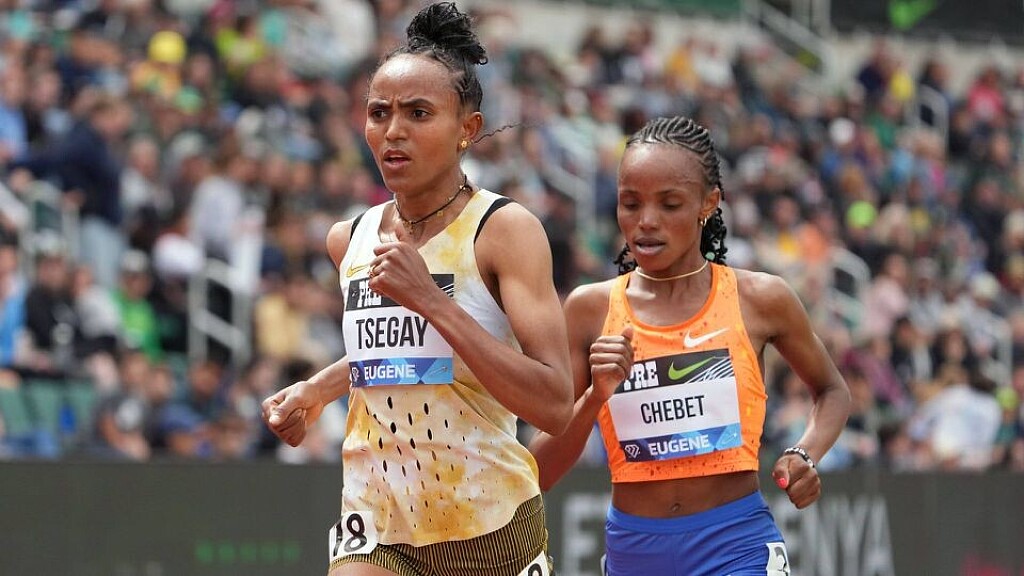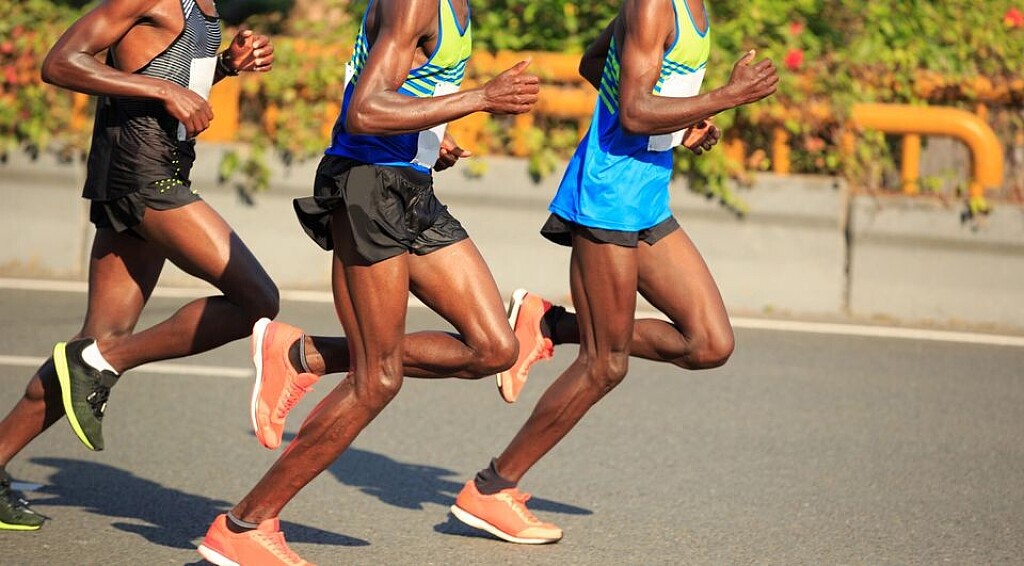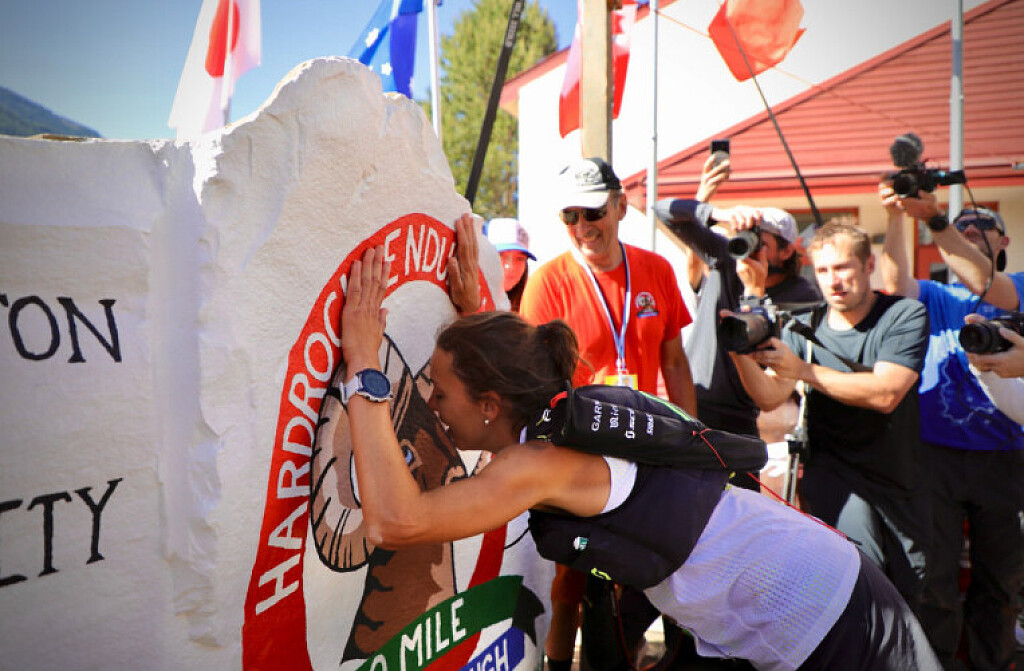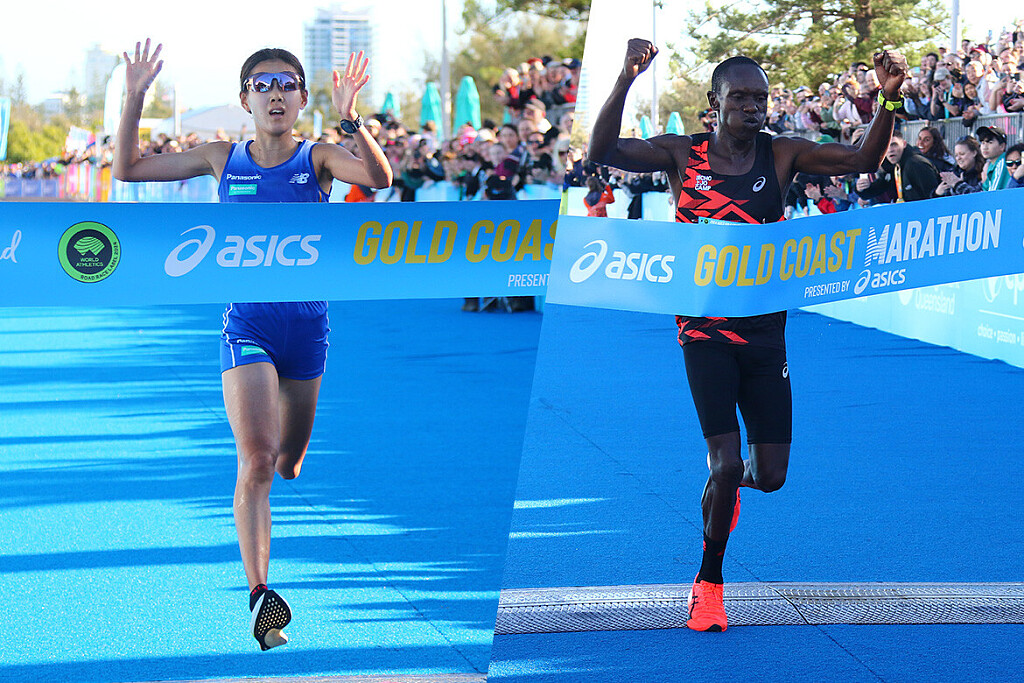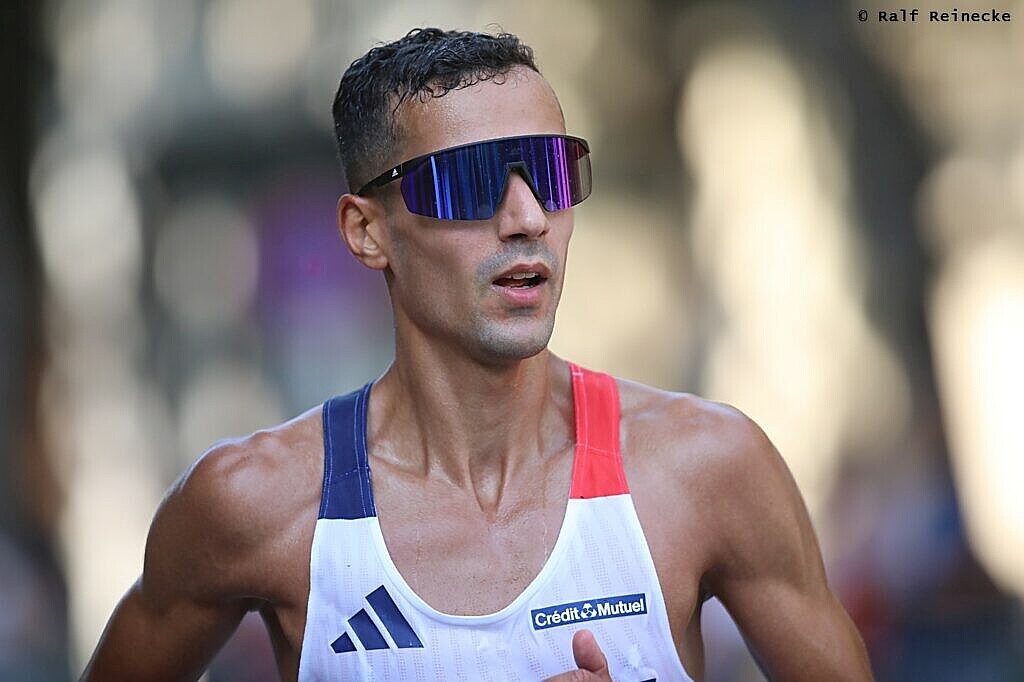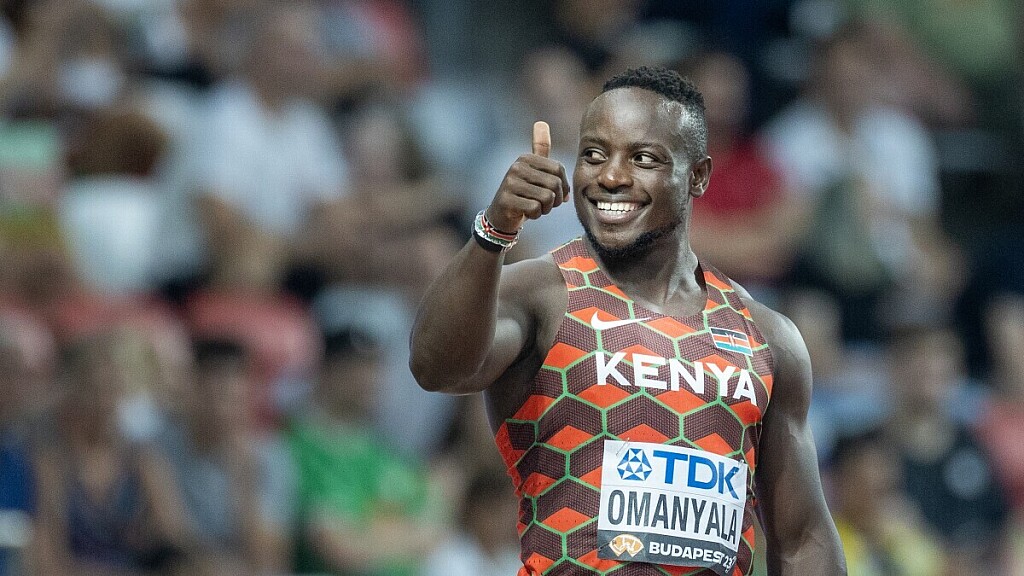Running News Daily
Top Ten Stories of the Week
7/13/2024
These are the top ten stories based on views over the last week.
Anti-Doping Agency reveals details leading to suspension of top Brazilian athlete caught in Kenya
The Anti-Doping Agency of Kenya has detailed how a top Brazilian athlete training in Kenya was nabbed over the use of a prohibited substance before she was suspended.
Anti-Doping Agency of Kenya (ADAK) has explained how Brazilian athlete Graziele Zarri was caught cheating in the country before she was provisionally suspended.
Zarri was among five athletes suspended by ADAK over various doping offences last month, the others being Kenyans Samuel Kimani Wanjiru, Panuel Mkungo, Brian Kiptoo and Victor Kiptoo.
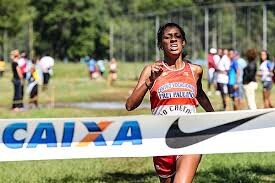
The Brazilian was nabbed for using prohibited substances S1.1 Anabolic Androgenic Steroids (AAS)/Testosterone with tests conducted while she was in the country.
“I confirm that ADAK collected a sample from the athlete on 23rd January 2024,” ADAK’s Head of Legal Services Bildad Rogoncho said in a response to Pulse Sports.
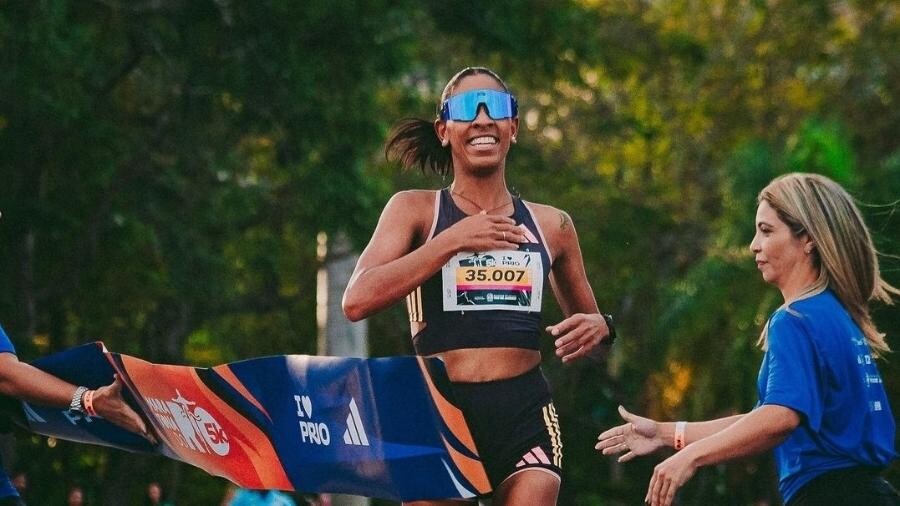
“The sample was transported to and analyzed by a WADA accredited laboratory in Stockholm, Sweden; that is the Doping Control Laboratory - Karolinska University Hospital.
“The Sample tested positive for Anabolic Androgenic Steroids (AAS)/ Pregnanediol, Androsterone, Androstane, Ketoetiocholanolone, Androstanediol, Etiocholanolone, Adilos, Epitestosterone and Testosterone.
“The athlete’s case was then referred to the Brazilian National Anti-Doping Organization for processing.”
ADAK says the athlete had been training in Eldoret when the sample was collected but when contacted, she denied having used the prohibited substance and claimed to have used a supplement acquired in Kenya.
She, however, failed to produce proof of the supplement and could not also recall its name, leaving ADAK with no option but to act.
“The athlete alleged to have bought and used some supplement which are suspected to have been contaminated with the substance found in the athlete's system. This matter is now being dealt with by the Brazilian National Anti-Doping Organization,” added Rogoncho.
Zarri is a long-distance runner who recently won the 5k race in Rio de Janeiro, Brazil and had been training in Kenya, alongside her husband Daniel Nascimento, in a bid to make Brazil’s Olympics team.
Nascimento is the South American marathon record holder and the only Brazilian qualified for the marathon at the upcoming Paris Olympics.
(07/05/24) Views: 226Joel Omotto
Gudaf Tsegay, Lamecha Girma head Ethiopia's 43-athlete squad to battle Kenya in Paris Olympics
In the 2021 Tokyo Olympics, Kenya bested Ethiopia as the top African nation, finishing 19th overall with 10 athletics medals.
World record-holders Gudaf Tsegay and Lamecha Girma are set to lead a formidable Ethiopian squad of 43 athletes at the upcoming Paris Olympic Games.
The robust team comprising top-tier talent across various track and field events promises to offer fierce competition to their long-time rivals Kenya in the race for Olympic medals.
Tsegay will be competing in the 10,000 meters, 5,000 meters, and 1,500 meters events.
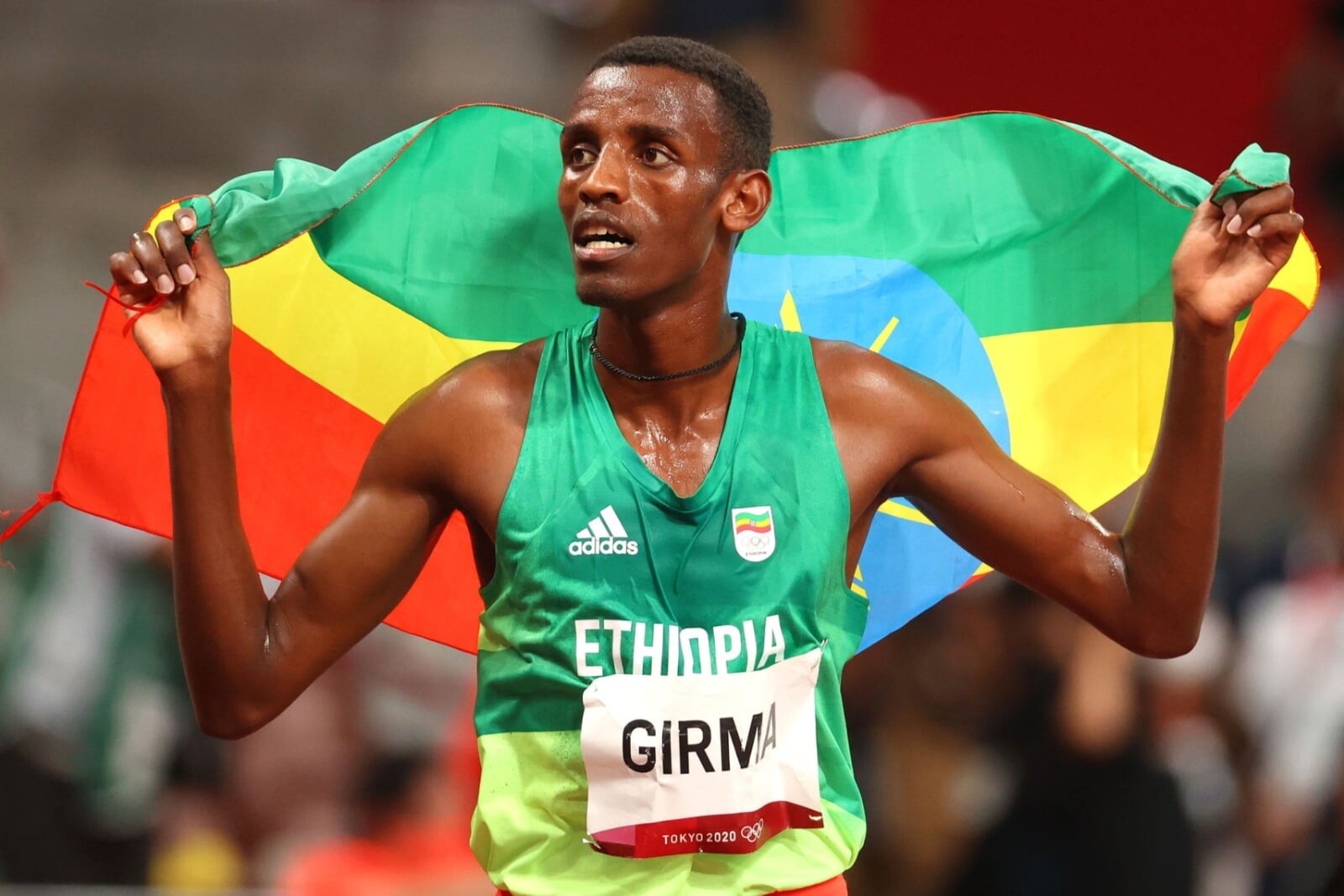
The 27-year-old athlete's standout performance at the Prefontaine Classic, where she shattered the world record in the 5,000 meters with an astounding time of 14:00.21, means she will be challenging rival Kenya's Faith Kipyegon who will chase two gold medals after winning the 1500m and 5000m.
The women's team also boasts an impressive lineup in the 800 meters, featuring Tsige Duguma, Habitam Alemu, and Werknesh Mesele, with Nigist Getachew as the reserve.
In the 1,500 meters, Tsegay will be joined by Birke Haylom and Diribe Wolteji, with Hirut Meshesha on standby. Medina Eisa and Ejgayehu Taye will support Tsegay in the 5,000 meters, with Freweyni Hailu as reserve, while Fotyen Tesfay, Tsigie Gebreselama, and Aynadis Mebratu will compete in the 10,000 meters.
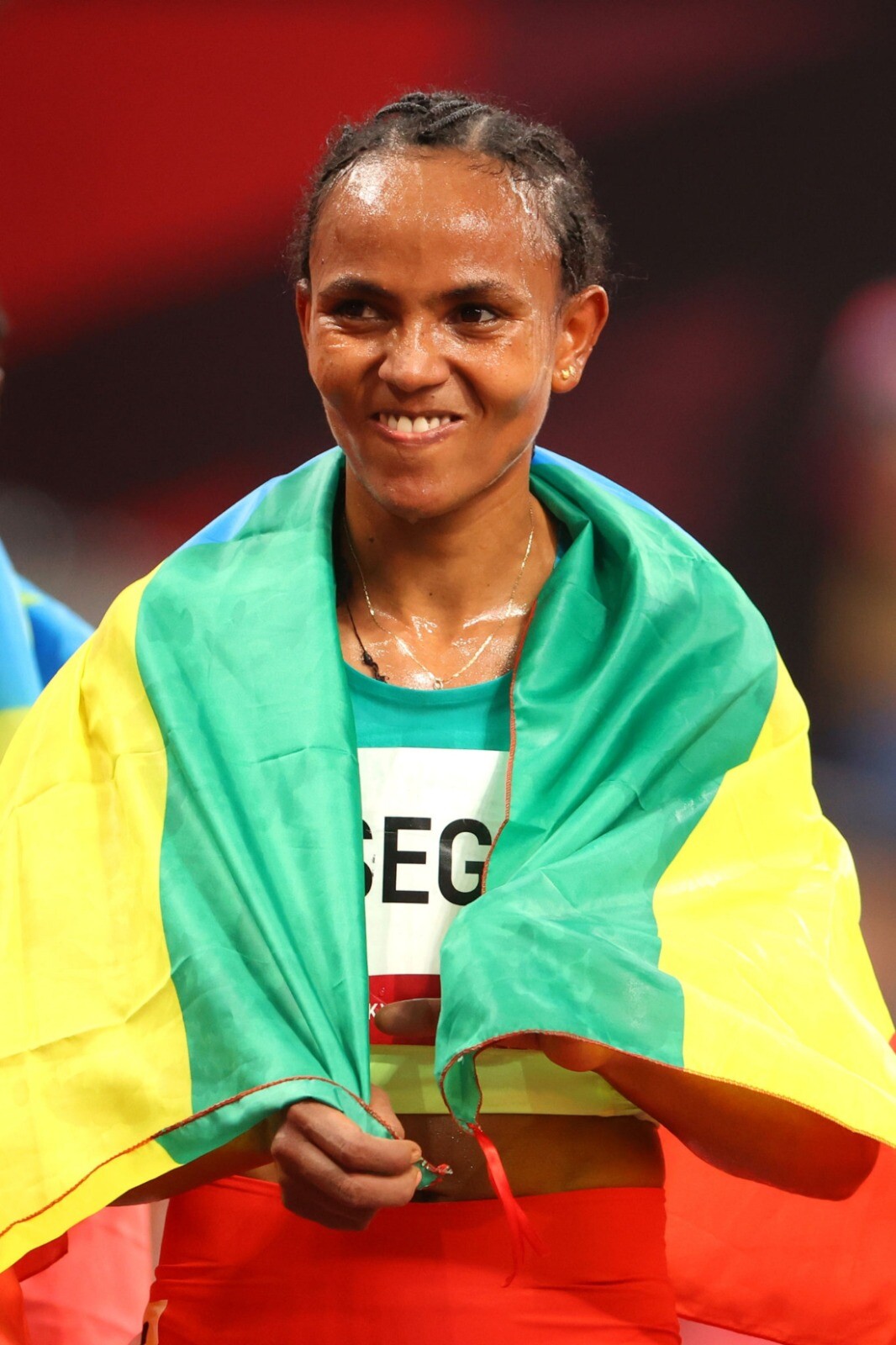
The 3,000 meters steeplechase will see Sembo Almayew and Lomi Muleta in action, and the marathon team includes Tigst Assefa, Amane Beriso, and Megertu Alemu, with Gotytom Gebreslase as reserve.
On the men's side, the team is equally impressive as Abdisa Fayisa, Samuel Tefera, and Ermias Girma will compete in the 1,500 meters.
The 5,000 meters team includes Hagos Gebrhiwet, Yomif Kejelcha, and Addisu Yihune, with Selemon Barega as reserve.
Kejelcha will also contest the 10,000 meters alongside Berihu Aregawi and Biniam Mehari, with Barega again as a reserve.
Lamecha Girma, alongside Samuel Firewu and Getnet Wale, will vie for victory in the men's 3,000 meters steeplechase, with Abrham Sime as reserve.
Ethiopia team to Paris
Women
800 meters: Tsige Duguma, Habitam Alemu, Werknesh Mesele, Nigist Getachew (Reserve)
1500 meters: Gudaf Tsegay, Birke Haylom, Diribe Wolteji, Hirut Meshesha (Reserve)
5000 meters: Gudaf Tsegay, Medina Eisa, Ejgayehu Taye, Freweyni Hailu (Reserve)
10,000 meters: Gudaf Tsegay, Fotyen Tesfay, Tsigie Gebreselama, Aynadis Mebratu (Reserve)
3000 meters Steeplechase: Sembo Almayew, Lomi Muleta
Marathon:Tigst Assefa, Amane Beriso, Megertu Alemu, Gotytom Gebreslase (Reserve)
Men
1500 meters: Abdisa Fayisa, Samuel Tefera, Ermias Girma, Teddese Lemi (Reserve)
5000 meters: Hagos Gebrhiwet, Yomif Kejelcha, Addisu Yihune, Selemon Barega (Reserve)
10,000 meters: Yomif Kejelcha, Berihu Aregawi, Selemon Barega, Biniam Mehari (Reserve)
Men's 3000 meters steeplechase: Lamecha Girma, Samuel Firewu, Getnet Wale, Abrham Sime (Reserve)
Marathon: Sisay Lemma, Deresa Geleta, Kenenisa Bekele, Tamirat Tola (Reserve)
20 km Race walk: Misgana Wakuma
(07/06/24) Views: 117Festus Chuma
Five reasons why athletes engage in doping activities
This article provides a comprehensive list of 5 pre-disposing factors as to why athletes engage in doping.
Kenyan athletes have always placed Kenya on the world map with their impeccable performances but it is usually not an easy way to the top.
Some athletes are always forced to take the easier route to the top, fueled by different challenges in their lives. Doping has been a crisis in Kenya in the past few years but the Anti-doping Agency of Kenya is slowly changing the narrative and ensuring athletes run clean and fair.

Speaking during the Sports Journalists Association of Kenya (SJAK) Anti -Doping Seminar, Dr. Martin Sisa outlined the pre-disposing factors that force athletes to take the wrong route and engage in doping.
1) Financial reasons

Most of the athletes come from humble backgrounds and they believe the easy way out would be through athletics. However, most of the successful athletes would admit that success does not come in one day.
Some have had to work for years before their breakthrough, but some of the athletes, especially upcoming, want to have quick riches and one way of achieving the goal is through doping. Some athletes engage in the heinous activity to get good results and in turn get sponsors and publicity.
2) Physiological reasons
Physiological reasons also contribute to why most athletes engage in the heinous activity. Some athletes may be looking to change the outlook of their bodies and work on their physiological aspects for the short term.
According to research on the physiological implications of doping in sports, some short-term responses the body include an increased heart rate, the redistribution of blood flow, the transporting of oxygen to the active muscles, and removing of waste products such as carbon dioxide from the body maintaining body temperature, and regulating hormones.
These responses enhance the body’s ability to cope with the immediate demands of the current exercise bout. However, the kind of doping that changes physiological aspects of an athlete has long-term negative effects that include heart failure, heart attack, arrhythmia, stroke and even death.
3) Governance issues
Poor governance of an athlete is also a root cause of doping. Whenever an athlete has a poor management wit malicious goals, he/she might be forced to dope, either knowingly or unknowingly. When athletes select a management, it is necessary to do a background check and understand all the important information before making the bold step.
4) Individual interests
Other athletes are driven to dope by their individual interests. Different athletes have different goals and not all are able to achieve the goals set within the specific time.
This may force them to engage in doping, to ensure they beat their deadlines and meet their needs either financially, psychologically or emotionally.
5) Hunger to win immediately
Cultural reasons may also push an athlete into finding himself/herself on the wrong side of the law. The culture in most sports is usually centered on winning, driven by the pressure from fans and external factors.
An athlete might also want to achieve a lot in a short span of time and this may lead to them engaging in doping activities almost any cost.
(07/06/24) Views: 110Abigael Wafula
The Western States 100 and Hardrock 100: A Metaphorical Comparison
With the Western States 100 taking place last weekend and Hardrock 100 taking place next weekend, this is the time of year when all ultrarunners look to California and Colorado.
I’ve been privileged to run both of these iconic events, and in recent years, I have traveled to Auburn, California, and Silverton, Colorado, each year to spectate and volunteer. I’ve had the opportunity to observe and experience what makes these events so different from each other and yet, on some level, very much the same.

Vibes
I like to compare the vibes of Hardrock and Western States to rock concerts.
Hardrock is that concert that takes place in a modest venue with a few thousand seats, think the Beacon Theatre in New York City. Think of the last concert you attended that brought you close to the artist and allowed you to interact socially with other concertgoers. That’s Hardrock.
Western States, on the other hand, is the massive stadium show, think Kenny Chesney at Gillette Stadium in Massachusetts. These concerts take on a festival atmosphere and bring thousands of people out long before the concert is scheduled to start. Loud, chaotic, and celebratory, Western States shares the vibe with these large stadium shows.
Track Versus Cross Country
In my previous professional life as a high school principal I attended more than my fair share of track and cross-country meets. Over the years I made some observations that remind me of the difference between Western States and Hardrock.
Track meets are slick and fancy. Track athletes wear crisp kits and sleek shoes. Western States is track.
Cross-country meets are loose and in the woods. Cross-country runners are a ragtag group with unkempt hair and oversized kits. They know how to run they just do it a little differently. Hardrock is cross country.
Pace
Hardrock weekend moves at a pace akin to a small town. Sure, the runners up front need to move fast, and those at the back may feel the pressure of meeting the cutoffs, but by and large, the race moves at a laid-back pace. Runners spend time regrouping at aid stations, volunteers linger to chat and share stories, and race officials and veterans of the event make everyone feel welcome and embraced by the community.
The pace at Western States is more like New York City during rush hour. Intensely competitive at the front of the pack and challenging with tight cutoffs at the back, there is little time for dilly-dallying for anyone. It’s an intense, fast-moving pace, the rewards of which are a shiny belt buckle and big city memories to last a lifetime.
Community
Both events celebrate and embrace community. In fact, they both endeavor to nurture a sense of community in the many activities surrounding their events. Additionally, the phrases “Western States family” and “Hardrock family” are part of the language around each race.
As you might expect, Hardrock is a close-knit family — the kind where many still live in the same area, get together often, and share many common characteristics. The Western States family is a massive extended family that is spread around the world, getting together only occasionally and with disparate goals, attitudes, and temperaments. Both families share common connections but do so in very different ways.
Regardless of their differences in vibes, type of race, pace, and community, both Western States and Hardrock have earned their places on the top step of North American ultrarunning culture. In spite of, or perhaps because of, their unique characteristics, these two events have been able to stand the test of time, doing so in their own unique ways and on their own independent terms. As a result, they continue to be the two of the most sought-after events in American trail running and ultrarunning.
(07/07/24) Views: 103
I Run Far
Why does humidity makes running harder?
If you’re heading out for an easy run in muggy weather and your heart rate is skyrocketing, don’t blame your fitness level. External factors like temperature and humidity are most likely impacting your running efficiency and performance.
Humidity, in particular, plays a crucial role in affecting your heart rate and perceived effort. Understanding how humidity influences your running can be essential for optimizing your training and making the most of running in hot, humid conditions.
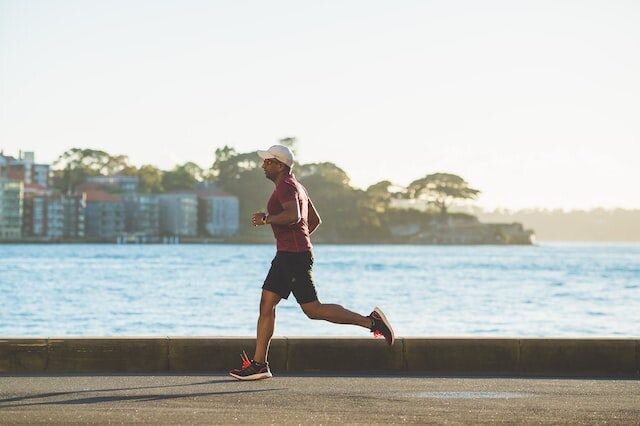
Understanding humidity
Humidity is the amount of moisture (water vapour) in the air. When levels are high, the air is saturated with water vapour, making it harder for sweat to evaporate during exercise. This evaporation process is essential for regulating body temperature and optimizing performance. When sweat cannot evaporate efficiently, your body struggles to cool down, and your core temperature remains elevated. This means your heart has to work harder, pumping more blood to the skin’s surface to facilitate cooling through sweat evaporation.
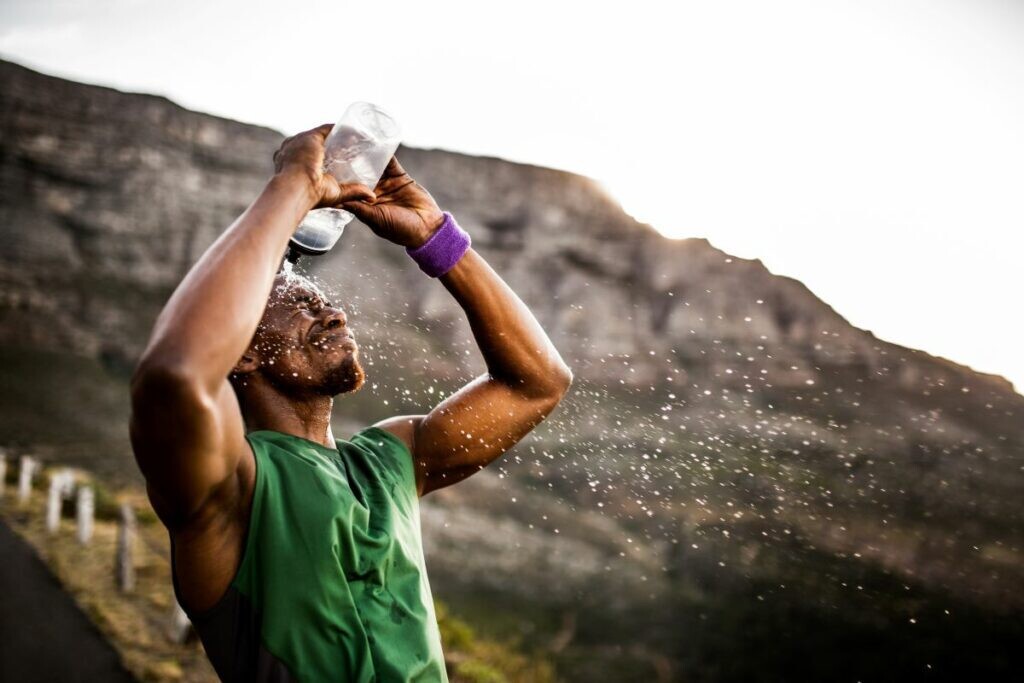
This increased workload on the heart results in an elevated heart rate, even if your running pace remains unchanged. In other words, your heart has to beat faster to maintain adequate blood flow and temperature regulation, making running in high humidity more challenging.
Impact on running
It’s normal for your heart rate to be higher when you’re running in heat and humidity, but this can make running feel more strenuous and mean you feel fatigued earlier. If you’re training for a half-marathon or marathon and heading out for long runs in humid conditions, you might experience a phenomenon known as cardiac drift. This occurs when your heart rate gradually increases over the duration of a long run, even if your pace remains constant, making the effort feel harder over time.
To combat cardiac drift, start your runs well hydrated, and carry water with you. It’s also wise to avoid running too far from home, in case you run out of water. Many experienced marathoners tackle this by doing their long runs on a three- to five-kilometre loop, where they can set up a water station or access a water fountain. This ensures they have consistent access to water and can effectively manage their hydration.
Tips for managing humidity
Try to run during cooler times of the day, such as early morning or after sundown, when humidity levels are lower. Drink water during your run and wear cool, light, moisture-wicking clothing to help regulate your body temperature. If your heart rate remains elevated, consider slowing down the pace to allow your body to adapt to conditions. Training smart in humidity can pay dividends for fall road races.
Another approach is to leave the heart rate monitor behind and run by feel. These devices can sometimes do more harm than good by making you overly focused on numbers instead of tuning in to your body’s signals. Learn to listen to your body and pay attention to how you feel during your run. If you experience dizziness, nausea or excessive fatigue, stop running and seek water and a cooler (shaded) environment to recover.
By understanding how humidity affects your body and taking appropriate precautions, you can continue to enjoy the benefits of running while minimizing potential risks.
(07/06/24) Views: 102Marley Dickison
Timothy Kattam and Yuki Nakamura secured the victory in the Gold Coast Marathon
A diminutive 23-year-old Japanese surprise packet today smashed the ASICS Gold Coast Marathon women’s race record, stunningly in just her second marathon.
Yuki Nakamura came into Sunday’s race at the lower end of the top 10 but turned the form guide upside down with a 2:24:22 run that eclipsed American Lindsay Flanagan’s race record of 2:24:43 set in 2022 by 21 seconds.
It was the third fastest women’s marathon time on Australian soil, the other two fastest achieved by the gold and silver medalists at the Sydney 2000 Olympic Games.
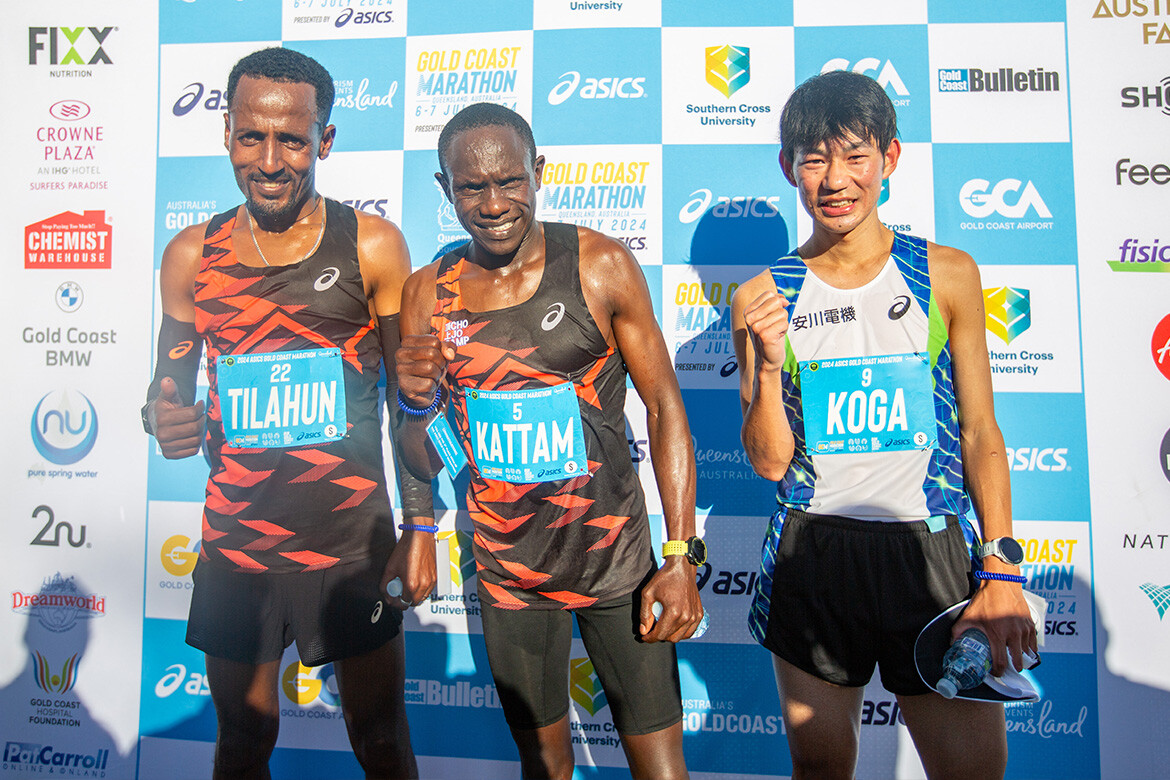
Ethiopia’s Kumeshi Sichala (2:25:25) and pre-race favourite Kenyan Visiline Jepkesho (2:26:17) took the minor placings.
Nakamura’s out-of-a-hat record was achieved on a perfect-for-running Gold Coast morning alongside a record 10,000-plus fellow marathoners who competed on the day.
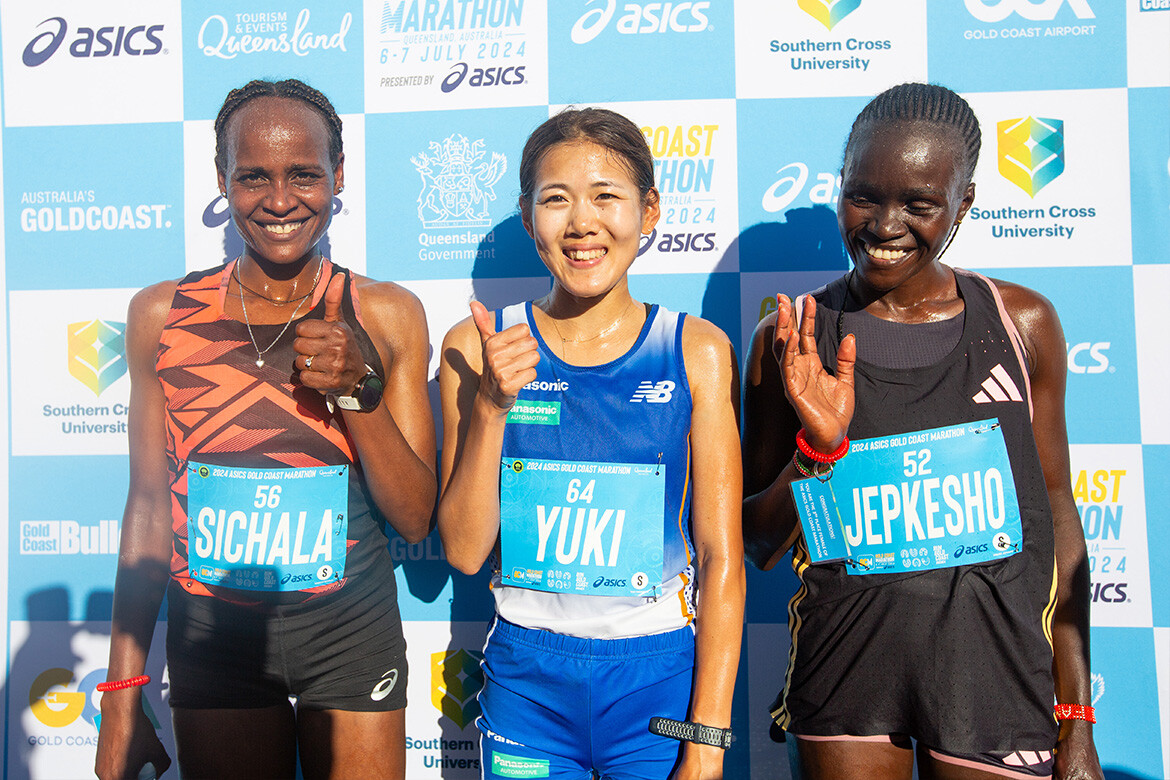
The men’s event was taken by Kenya’s Timothy Kattam in 2:08:52, six seconds ahead of Ethiopian Belay Tilahun (2:08:58) and Japan’s Kiyoshi Koga (2:09:22).
Nakamura said she had a slightly more conservative target time on the start line.
“I was aiming for a 2:26 result, that was my objective, however, to come here and win the race, I am so happy with the result,” she said.
Nakamura said she went with the early pace.
“In the beginning, it was faster than I anticipated but I was feeling great and enjoying the ambiance of the Gold Coast, so I just went for it and then I realised there was nobody else around and I was winning.
“At the 30km mark I wanted to drop off the group, but then it was downhill, so I tried to hang in there and catch up on the speed and when I got to the 35/36km mark it was good and I made my move.
“I have no idea how this feeling is, however later on I will feel the power of standing on the top step of the podium,” she said.
Second place Sichala said she was happy to achieve a personal best at her first ASICS Gold Coast Marathon.
“My race went to plan, it was good, and I am very happy,” she said
“I loved the people cheering along the course and I will come back to the Gold Coast again,” she said.
Jepkesho was happy enough with her debut appearance on the Gold Coast
“It wasn’t my personal best, but I felt good,” she said.
Men’s champion Kattam said he surprised himself with his first run in Australia.
“This is my first time coming to Australia, I am so grateful for today’s race, it was fantastic; I like the course, everything was well, I am very happy for the day. “It was about the win, [and] we were very tight over the ASICS athletes, it was a very tough race.
“[Our team tactics] come out during training and that is what motivates us,” he said.
“The pace was 3:01, 3:02, but then it went to 3:07 and that is when I decided to make a move, to control the speed, “This is a very good season for me; today I wanted to try for a podium, but I didn’t expect to win today’s race and I am very happy, and I am looking to be back in Australia next year,” he said.
Tilahun was happy with his run. “It was a personal best for me, so how can you not be happy with that?”
Third place Koga wanted to do it his way. “The last few races I haven’t done well in the marathon, so I just wanted to run the way it should be and stay steady and this was the result,” he said.
“The winner last year was Japanese, so I was aiming for first place but at least I am on the podium and for that I am grateful.
“Many people were cheering, and it was a really fun and enjoyable run,” he said.
The best Australian in the men’s race was Liam Boudin (2:13:56) who was eighth overall in his debut marathon while Victorian Sarah Klein (2:31:58) was the first Australian woman across the line and fifth overall in the women’s race.
(07/08/24) Views: 97Halifax man completes run across Canada in 99 days
Ryan Keeping ran from St. Johns to Victoria in 99 days to raise money for the Heart and Stroke Foundation.
As a touching tribute to one man’s hero, Terry Fox, and to support the Heart and Stroke Foundation, Ryan Keeping of Halifax has run across Canada in 99 days. On Sunday, July 7, Keeping completed his 7,386-kilometer trans-Canada journey in Victoria, running more than 75 kilometers daily and raising more than $200,000 for the Heart and Stroke Foundation.
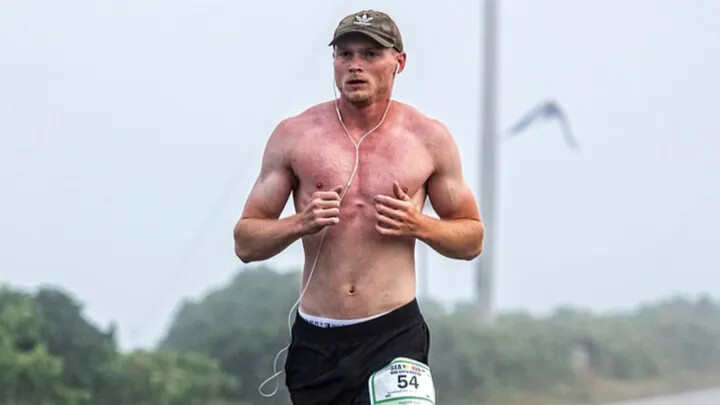
Keeping began his journey on April 1 in St. John’s, intending to end in Victoria within 100 days. He says his goal was not to chase any records, but to meet amazing people, hear the stories of Canadians along the way and raise money for a cause close to his heart.
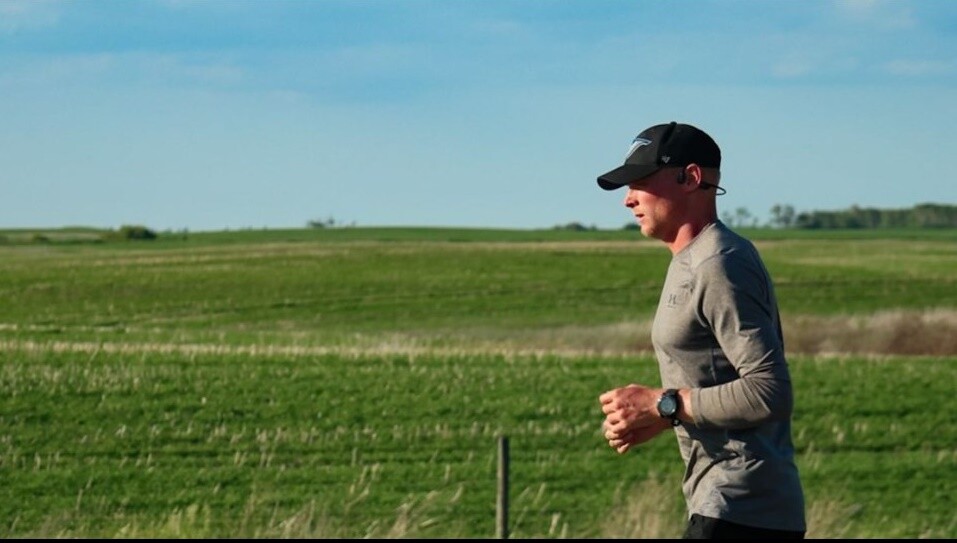
“This wasn’t about a record, a time, or bragging rights,” Keeping wrote about his achievement. “This was about Canada, the children, and the amazing people along the way. The interactions throughout the 99 days changed my life forever, and I thank everyone for that. I am forever grateful for this journey, and I hope we can all take a lesson from this, that anything is possible, whether you’re a couch potato or an athlete.”
Like his hero, Fox, Keeping had a reason for his cross-country run. Several of his family members, including his dad and his grandfather, have been affected by heart disease. Recently, both of his siblings have tested positive for the gene causing heart issues. His decision to run across Canada to raise funds and awareness was to help other families like his, who have been affected by heart disease.
Keeping ran through nine of Canada’s 10 provinces, holding meet-and-greets and running events as he passed major cities: Toronto, Winnipeg, Calgary and Vancouver. He celebrated his finish by pouring a jug of water from the Atlantic into the Pacific Ocean. “It’s what Terry wanted, and I’m happy to say I could honor my run for him,” said Keeping.
(07/08/24) Views: 92Marley Dickison
All the Benefits You Gain from Walking, Even if You Don’t Hit 10,000 Steps
Putting one foot in front of the other can help you live a healthier, happier life.
In the age of biohacking and complicated training protocols, it’s a good idea to periodically circle back to basics and remind yourself that exercise doesn’t need to be complicated to be effective. Sometimes, the best type of movement is the simplest, and it doesn’t get simpler than walking.

Yes, walking—the same physical activity you’ve been performing since toddlerhood. Back then, putting one foot in front of the other and moving your body from point A to point B was a thrill. Truthfully, you may never fully tap into that feeling of unencumbered freedom or primal joy again. Nevertheless, understanding the physical and mental health benefits of walking may inspire you to up your daily step count or squeeze in a quick stroll after dinner.
To convince you to do just that, we looked at the research and chatted with health and fitness experts for their thoughts on the benefits of walking. The next time you bump up against some confusing health advice or feel too overwhelmed to work out, consult this list. Then go for a walk.
1. Blood Sugar Stabilization
Consistently, research has shown that even a leisurely 10-minute stroll after dinner can help regulate blood sugar levels.
“The food that you eat is broken down in the stomach. Some of that gets broken down into different simple sugars and then sent to the bloodstream, and then that can be utilized in the muscles,” Todd Buckingham, Ph.D., exercise physiologist at PTSportsPRO in Grand Rapids, Michigan, tells Runner’s World. “Walking can help stabilize the blood sugar levels and not get that spike immediately after eating because the muscles are being activated and are going to uptake blood glucose.”
While even slow walking will do the trick, there is some evidence that picking up your pace may further mitigate the risks of type 2 diabetes. The findings of a systematic review published in the British Journal of Sports Medicine suggest that the faster you walk, the greater the benefits. According to the included studies, frequently walking at a casual pace (less than two miles per hour) was associated with a disease risk reduction of around 15 percent. A faster “brisk” pace of between three and four miles per hour was associated with a 24 percent lower risk, and an even quicker pace was linked to a 39 percent risk reduction.
2. Better Sleep
Walking, a low-impact exercise you can do daily, is “the single best way to improve sleep quality,” Michael Breus, Ph.D, clinical psychologist, sleep medicine expert, and founder of The Sleep Doctor, tells Runner’s World.
In simple terms, walking tires the body and increases the naturally increasing pressure to sleep throughout the day. Research shows that physical activity also increases melatonin, a sleep-promoting hormone, regulates body temperature, and can help reduce stress, which can negatively affect sleep.
If you’re having trouble falling asleep, Dixon recommends swapping your before-bed scroll sessions for an evening stroll at dusk. “Walking at night can be especially helpful when it comes to falling asleep. Natural light and avoiding screen time tell your body that it’s time to wind down,” he says.
3. Healthy Weight Maintenance
“The amount of calories burned while walking depends on the speed and distance, but any amount of calories burned can help with your goal of maintaining or losing weight,” William Dixon, M.D., co-founder of Signos and Clinical Assistant Professor at Stanford School of Medicine tells Runner’s World
In one study published in the Journal of Exercise Nutrition and Biochemistry, clinically obese women who participated in a 12-week walking program (50 to 70 minutes of moderately intense walking three days a week) lost abdominal fat and showed improvements in their fasting glucose levels. Members of the control group, all of whom maintained a sedentary lifestyle, exhibited no significant changes.
4. Stress Relief and Mood Regulation
There are reasons why taking a walk to “clear your head” actually works. “Walking can help with emotional regulation,” Craig Kain, Ph.D., a psychologist and psychotherapist based in Long Beach, California tells Runner’s World. “At times, our feelings get the best of us, and we find ourselves off-balance emotionally. Walking can increase levels of two neurotransmitters, dopamine, the ‘happy hormone,’ and decrease levels of cortisol, the ‘stress hormone,’ restoring our brains to a state of equilibrium.”
Kain notes that a regular walking routine can provide over-stimulated people a “time-out” for quiet self-reflection or allow isolated individuals to connect with others in their community. “A client of mine was depressed and housebound after COVID. Walking helped them gain confidence and a sense that they fit into the world again,” Kain says. “By just walking through their neighborhood, they began to feel less fear of other people. They loved dogs and began to say hello to the dogs and owners they saw along the way. Soon, their depression began to lift, and they looked forward to their walks, which became a daily practice, and [it inspired] the feeling of belonging in society.”
5. Reduced Risk of Dementia
Some research shows that getting in your daily steps—right under 10,000 is ideal—is associated with a reduced risk of dementia. But even less than half that amount could make a positive effect, according to a study published in the Journal of Alzheimer’s Disease.
The authors of the cross-sectional study found that participants who walked at least 4,000 steps a day exhibited better cognitive functioning and had thicker medial temporal lobes (a part of the brain associated with memory) than individuals who accumulated fewer steps. Exactly how physical activity influences brain health isn’t entirely clear, but the authors suggest that the theory of “adaptive capacity model” may be at play.
“This model suggests that during aging, the brain responds adaptively by diminishing capacity so as to reduce energy costs, leading to age-related regional brain atrophy and associated function,” they write. “Engaging exercise in late life can adaptively increase capacity, thus reducing the impacts of cognitive aging.”
“As a therapist who is very aware of the toll dementia takes on individuals, families, and extended families, 4,000 steps seems one of the best preventative mental health actions one can take,” Kain says.
6. Boosted Recovery
While walking is accessible, beginner-friendly, and appropriate for older adults, it can also benefit athletes and individuals who enjoy intense exercise.
“Personally, I like to use walking as a recovery tool,” Buckingham says. He explains that walking helps facilitate blood flow, which can help clear the byproducts of a tough workout and promote the repair of damaged muscle fibers. Walking can also help reduce postworkout swelling.
Dixon notes that some avid exercisers, especially those who prefer high-intensity activities, are often inactive (or even sedentary) during the other 23 hours when they’re not in the gym. “Walking is an easy way to increase your exercise when you might be too tired for another tough workout,” he says.
7. Inspiration to Move More
In and of itself, walking is an excellent use of your time, as evidenced by all the aforementioned benefits. But you may find that consistently hitting your daily step target leads to setting (and conquering) even more ambitious goals.
“I think one of the biggest [benefits of walking] is that it just gets people used to committing to physical activity,” Dixon says. “Often this encourages them to choose behaviors we know are healthy in other aspects, like sleeping more and making healthier diet choices.”
8. Easy to Stay Consistent
Compared to other types of exercise, walking has very few barriers to entry. It doesn’t require an expensive gym membership or sports equipment. You don’t need any special skills or training, and even those new to exercise or navigating health challenges can usually walk. “It’s low-impact, so you’re not going to get stress on the knees, ankle, and other joints that you might with running,” Buckingham says.
To get started with walking, all you really need is a pair of comfortable shoes. “Heck, you don’t even need a pair of shoes. You can walk around barefoot. Go for a walk on the beach,” Buckingham says. New walkers can start with a leisurely walk around the block and gradually add distance or pick up the pace.
Finally, unlike other workouts, you can easily incorporate walks throughout your day—every walk doesn’t have to feel like a workout. You can walk while you take a phone call or during a lunch break. If you don’t have time for one 30-minute walk, you can split it up into two 15-minute walks or three 10-minute walk breaks.
With a little planning, walking can become part of how you connect with friends, family, or pets. “I take my dog for a walk around the block, and we go for a walk around the block with family after dinner just to talk and get outside,” Buckingham says.
(07/06/24) Views: 92French marathoner named to Olympic team gets two-year doping ban
2:05 marathoner Mehdi Frère has been handed a two-year suspension for missing three doping tests within a year.
French marathon runner Mehdi Frère, recently named to France’s Olympic team for the men’s marathon, has been banned for two years for breaching anti-doping rules, his lawyer told Agence France-Presse (AFP) on Tuesday. Frère’s suspension is due to a whereabouts offence (missing three doping tests within one year).
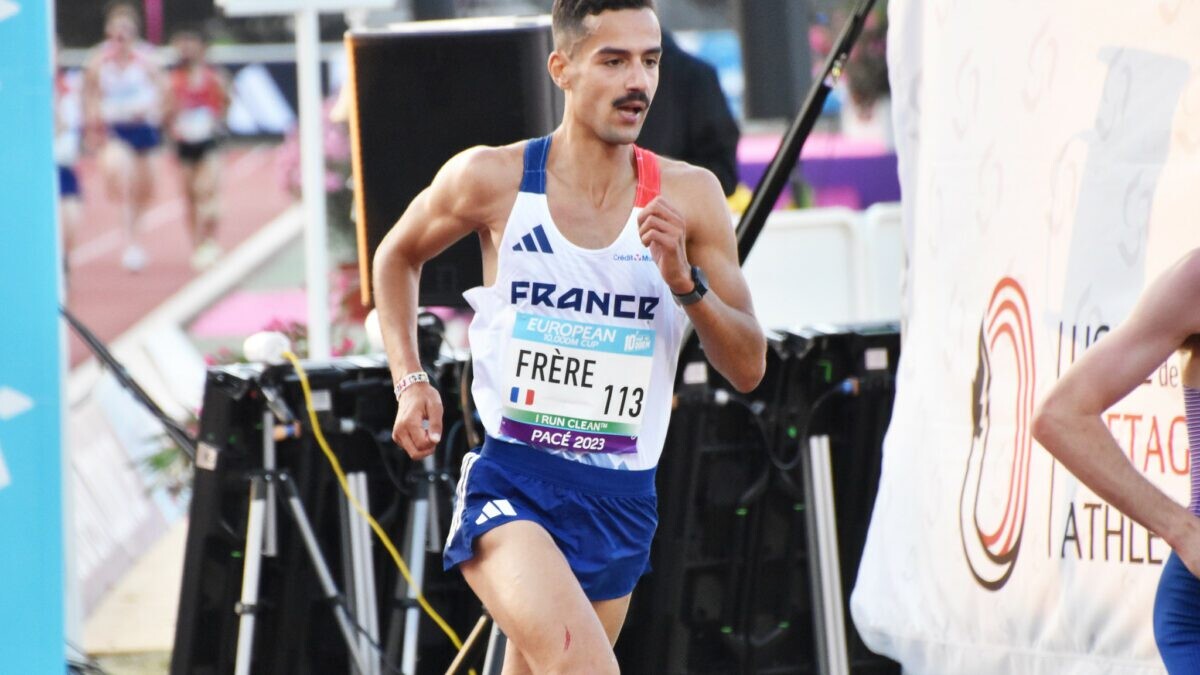
Frère’s personal best of 2:05:43 makes him the second-fastest marathoner in French history and the ninth-fastest European. He set this time at the 2023 Valencia Marathon, where he finished ninth. In May, Frère was named to the French Olympic marathon team alongside Morhad Amdouni and Nicolas Navarro. The Fédération Française d’Athlétisme (FFA) has opted for a conditional selection of Frère (instead of selecting another athlete) during the appeal process.
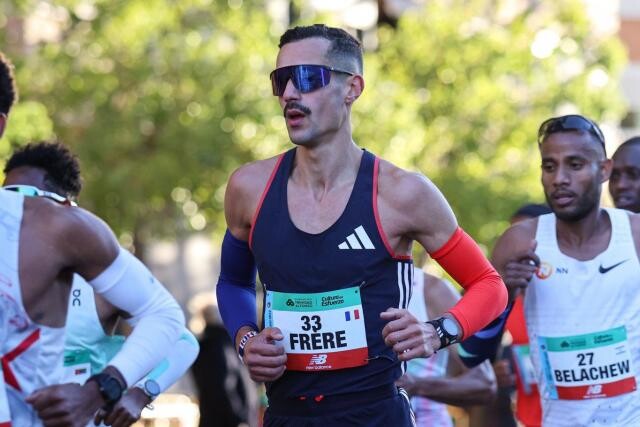
According to the AFP, Frère plans to appeal the ban at the Court of Arbitration for Sport (CAS) and believes a decision before the Olympics is possible. “We’ll be able to refer the matter to the Court of Arbitration for Sport as part of an accelerated procedure, to obtain an arbitration award by July 26, the opening day of the Olympics,” his lawyer told AFP.
During the appeal process, Frère is ineligible to compete, and he could face a longer ban if he loses the appeal. The men’s marathon is scheduled for Aug. 10, the penultimate day of the Paris 2024 calendar.
Frère is the latest recipient of a whereabouts suspension, which has affected some of the most high-profile distance runners this year. Spanish distance runner Mohamed Katir was suspended earlier this year, also for a whereabouts offence. Katir launched an appeal, then admitted to the wrongdoing, accepting a two-year ban–meaning he won’t be competing for his country at the Paris 2024 Olympics.
(07/09/24) Views: 91Marley Dickison
Why Paris Olympic Games will be key for Omanyala career
The last time an African athlete scaled the Olympic podium in the sprints was in Atlanta in 1996 when retired Namibian great Frankie Fredricks won silvers in the men’s 100m and 200m finals.
It was a repeat of his exploits at the 1992 Barcelona Summer Games, where he also won the silver double.
Ahead of the forthcoming Paris 2024 Summer Games, there is renewed optimism that a sprinter from the continent will medal either in the short or longer dash events considered to be the cream of track and field competition at the Olympics.
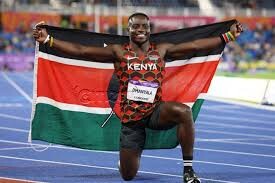
African record holder Ferdinand Omanyala of Kenya, the ninth fastest men’s 100m runner of all time, Botswana breakout starlet Letsile Thebogo and resurgent South African sprint king, Akani Simbine, have all enjoyed a solid start to the season and, more importantly, peaking at the right time.
Omanyala who holds the African record of 9.77 seconds, underlined his credentials when he won the Kenyan Olympic Trial in 9.79 which was until last week, the fastest time of the year.
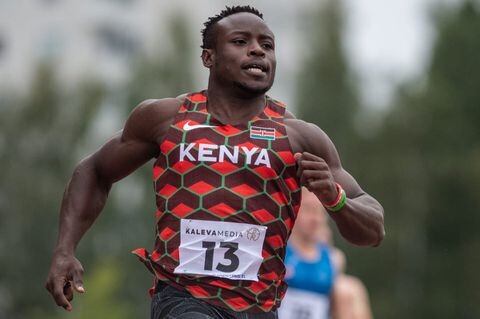
Kishane Thompson, who won the men’s 100m in 9.77 at the U.S. Olympic Trials on Sunday, has supplanted Omanyala from the top of the 2024 world list, but considering the latter did it at Nairobi’s punishing elevation, there are reasons for the Kenyan to be optimistic of a medal in France.
Having burst onto the scene with his blazing time in 2021 at the height of the global pandemic, the 28-year-old, who has since won the Commonwealth and African men’s 100m, has established a reputation as one of the brazen and at times cocky top sprinter.
But that is all set to change as he prepares for his second Olympics after failing to make the final of the delayed Tokyo Summer Games.
Speaking to the media in Nairobi on Monday, Omanyala cut the determined figure of a man who is focused on the ultimate goal— not the showmanship side that has endeared him to millions of fans at home and abroad.
“Our sport humbles you; everybody who is anybody in the sport has lost a race at some point. With that, you understand that it’s not always about you winning; it’s about how humble you are; it’s just that.”
Biggest lesson
“It’s the biggest lesson that I have learned and I understand that there is pressure coming in, especially as we go to the Olympics. There are a lot of expectations,” the two-time African champion emphasised.
And indeed, lessons have been learned. In April, Omanyala had boldly predicted he would not allow American sprint heavyweight Kenny Bednarek, the Olympic 200m silver medallist, to beat him on his home track during the Absa Kip Keino Classic, the World Athletics Continental Tour Gold event that went down in Nairobi.
As it turned out, Bednarek stepped down the distance to win in 9.91 as Omanyala (10.03) faded to fifth in front of a passionate home crowd, and later, the American posted a video on social media that threw shade at the Kenyan.
However, behind the scenes, the Commonwealth champion was adjusting to changing coaches, with Geoffrey Kimani, who was part of the Kenya 7s rugby technical bench, taking over at the start of the year.
Retreating quietly to his new training regime and running technique, Omanyala turned up for the Olympic Trials in June a man transformed and humbled.
“This year, I am not giving anybody any target; I am not going to promise anybody anything.”
(07/05/24) Views: 91
Xinhua News





